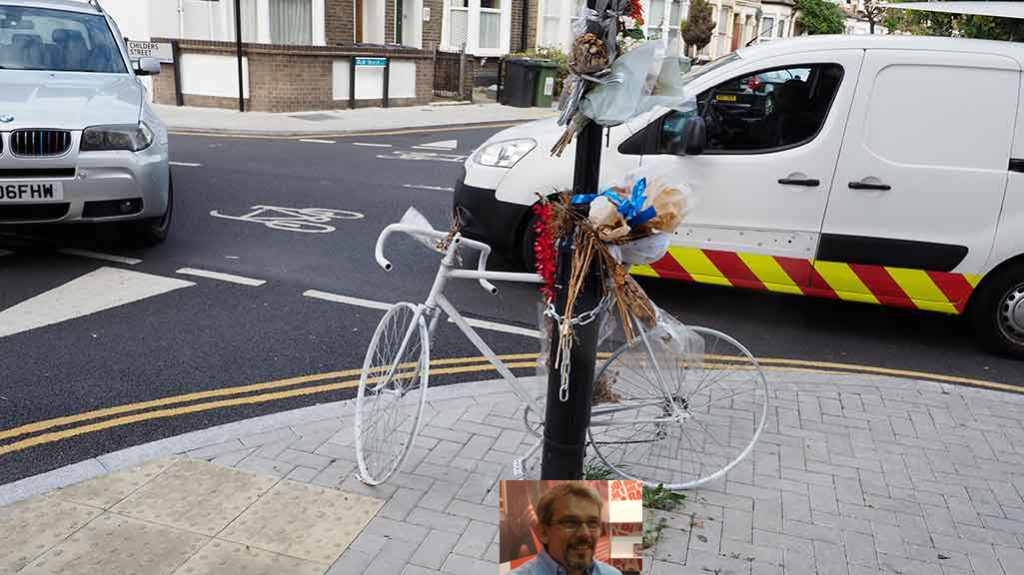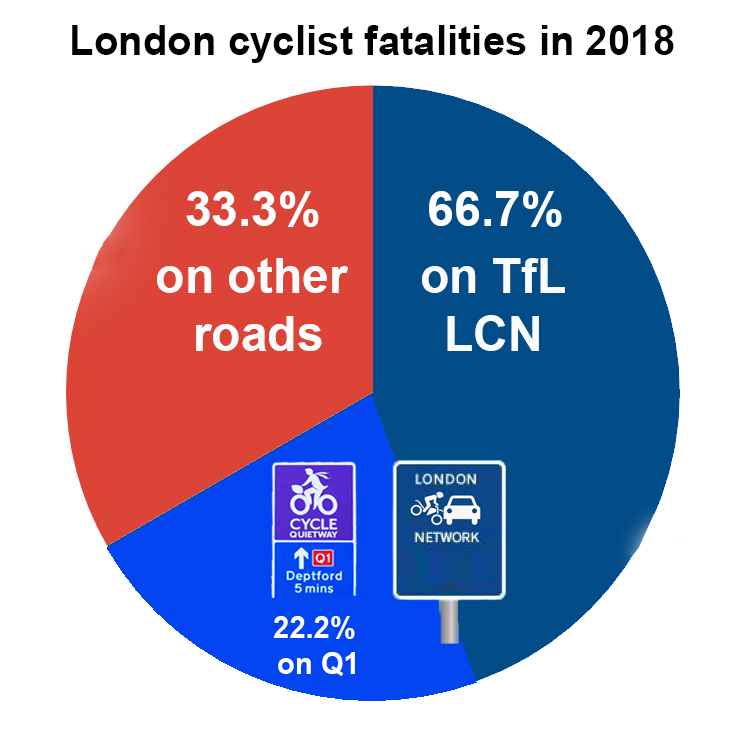Policy for London’s Quietways

London’s ‘quietways’ are not quiet enough. TfL explain them as: ‘continuous and convenient cycle routes on less-busy backstreets across London’. They are on backstreets. But they not continuous, because there are so many unimproved junctions. Their convenience is for local trips: for longer ‘strategic’ trips most cyclists prefer to take their chances on the TLRN red routes. Nor are the Quietways safe. TfL state that cycle usage of Q1 rose by 56% from its opening in 2014 to June 2017. I guess this was from a low base and that most of the trips are local. In 2018 22.2% of London cyclist fatalities were on Quietway 1.

Andrew Gilligan, who was London’s cycling commissioner when the quietway programme was launched, commented that:
Gilligan further explains that ‘The difficulty with the Quietways programme was that it runs almost entirely on borough roads and, as I said before, most of the boroughs lack the political leadership necessary. ‘ ‘We should not try to do things that cannot be done. The money should instead be diverted to that handful of boroughs, those five or six, which have both the capability and the willingness to do things.’
Citymetric comments that ‘Quietways are on the 95 per cent of London’s roads run by its 32 boroughs, which take a variety of very differing view on cycling. The result is an at times notional mixed bag of routes: some are little more than signage and painted bike stencils on roads, but they’re interspersed with good interventions, dependent largely on which borough boundary you just crossed’.
The Aseasyasridingabike blog comments that ‘the Dutch wouldn’t get themselves into this kind of problem in the first place. They wouldn’t be trying to join up a ‘cycle route’ across a main road where the side streets don’t line up. The side streets would just be ordinary, residential side streets, and there wouldn’t be a need for a dedicated cycle crossing, because this wouldn’t be ‘a route’. People would be cycling along the parallel and much more direct main roads just to the south and the north, the A2, and the A2206, if they want to go anywhere.’
The LCC London Cycling Campaign comments that ‘Current Quietways proposals fail at key hurdles: busier junctions are often not appropriately treated to separate cyclists from motor vehicle traffic in time and/or space – some of these junctions will remain hostile enough for current cyclists, they certainly won’t enable all-ages, all-abilities cycling or entice those who want quieter routes to cycle; there are also too many busier road sections that are far from “quiet”, without appropriate space for cycling measures – whether that’s protected tracks or modal filters or other methods, too often the proposed design is simply more paint and logos on the road.’
Caroline Russell (a London Assembly member) commented in 2018 that ‘The Mayor is relying too much on Quietways, but he knows as well as me that they aren’t the answer and won’t convince nervous people new to cycling to use their bikes on the road. They’re also not suitable for children biking to school because they’re not joined up routes, they’re not segregated from motorised traffic and so they’re not safe. ‘
My comments are
- the quietways not direct enough or fast enough for commuter use
- the quietways are not enjoyable enough or safe enough for leisure use
- trying to kill two birds with stone often leads to them both escaping
Quietway 1 (see detailed review and assessment) was once a London Cycle Network use. Despite its tragic accidents, it is not a complete failure. But nor is it a substitute for a good commuter route and a leisure route between Greenwich and Central London. Some people use it for longer commuter trips and others use it for local trips. What SE London needs is:
- A cycle superhighway on the A200 (Evelyn Street – Lower Road – Jamaica Road)
- A Thames Cycle Path that follows the river as closely as possible – as the Thames path walkway does.
See also
